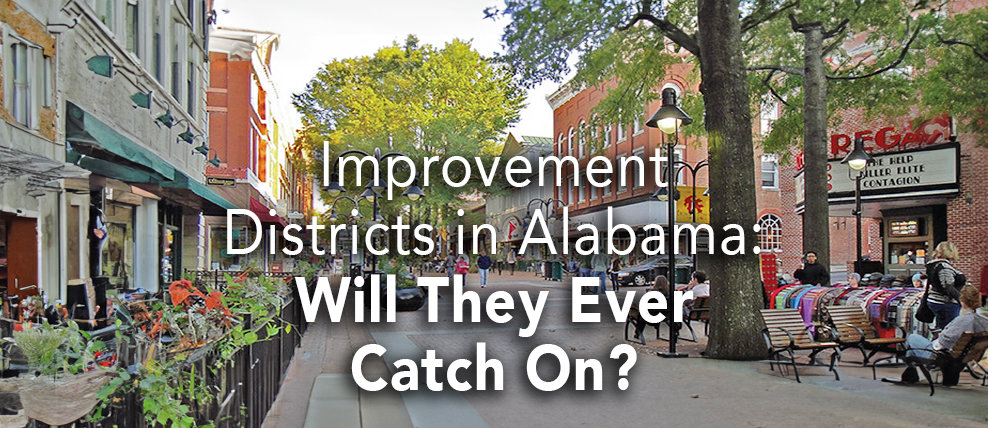Years ago, Alabama passed legislation giving local governments the authority to create Improvement Districts—public corporations designed to fund infrastructure like roads, sewer, water, parks, and parking through tax-exempt bonds. These bonds are repaid by special assessments levied on the properties that benefit from the improvements.
The formation process is straightforward: it requires a petition, a public hearing, and approval from a governing body (such as a city council). Once established, a board—typically appointed by the same governing body—oversees the district’s operations. The concept is widely used in other states, especially in the Sun Belt, where large-scale master-planned communities help make the economics pencil out.
But Alabama has struggled to embrace this financing model. Why?
For starters, scale matters. Improvement Districts tend to work best when applied to large, master-planned developments. These types of projects are more common in places like Texas, Florida, and Arizona, where in-migration and housing demand remain strong. In Alabama, many residential communities are smaller, making it harder to generate the bond repayment revenue needed to attract investors. If you’re a bondholder comparing a master-planned development in Alabama to one in Texas, the safer bet is Texas due to its population growth.
There are administrative hurdles too. In many states, improvement district assessments appear as line items on annual property tax bills. In Alabama, they’re billed separately—leading to confusion, missed payments, and enforcement issues. While unpaid assessments result in liens, those liens often aren’t collected until a property is sold—sometimes years later. No district wants the PR nightmare of having to evict a family over unpaid assessments. There’s been discussion in Montgomery about legislation to streamline assessment collection by integrating it into property tax bills, but so far, those efforts haven’t gained enough traction.
Then there’s the perception issue. Because improvement districts aren’t commonly used in Alabama residential developments, most neighborhoods don’t carry the additional assessment. All things equal, buyers tend to stick with the familiar and improvement district assessments are not the norm. Developers, in turn, avoid improvement districts for fear of alienating homebuilders and ultimately, buyers.
However, there’s a compelling counterargument: in neighborhoods where infrastructure is financed through an improvement district, the upfront cost of development can be reduced. Thatsavings can be passed along to builders and, eventually, buyers. The result? Lower home prices and mortgages in exchange for a modest annual assessment—paid only while the buyer lives in the neighborhood. The assessment stays with the land, not the homeowner.
Other states have normalized improvement districts with great success—making them the rule rather than the exception. Could Alabama do the same? Possibly. But it will take a combination of legislative updates, public education, and builders and developers embracing the concept to make it happen.

